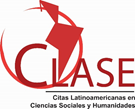Estrategias educativas para disminuir riesgos de sífilis y la morbi – mortalidad materno infantil en mujeres embarazadas atendidas en el Hospital Divina Providencia de San Lorenzo
Resumen
El presente estudio fue realizado en el Hospital Divina Providencia de San Lorenzo, el cual tuvo como objetivo implementar estrategias educativas para la disminución de riesgos de sífilis y la morbi-mortalidad materno infantil en las mujeres gestantes. Se desarrolló un estudio descriptivo, con un modelo cualitativo y cuantitativo, utilizando como técnica de investigación la encuesta dirigida a las mujeres embarazadas, para determinar que existe desconocimiento de sífilis gestacional y congénita en la población estudiada, también se realizó entrevistas a los profesionales para conocer su opinión y punto de vista sobre el tema investigado. La sífilis gestacional es aquella que se diagnostica en toda mujer embarazada, pos-parto, puerperio o con aborto reciente con úlcera genital o lesiones compatibles con prueba treponémica o no treponémica positiva o reactiva, que no ha recibido tratamiento adecuado durante la gestación. Al analizar diversas investigaciones se confirmó que hay un elevado nivel de desconocimiento por parte de la población. Al ejecutar la investigación, se demostró que el 70% de las mujeres gestantes desconocen del tema en estudio siendo un factor de riesgo para que en el recién nacido pueda tener sífilis y muchas complicaciones a futuro. Al concluir la investigación se demostró que a través de las estrategias educativas aplicadas las mujeres gestantes adquirieron nuevos conocimiento que les ayudará a identificar si fueron contagiadas de sífilis, y la importancia de acudir a los controles prenatales para un diagnóstico pronto y oportuno para prevenir la sífilis congénita, reduciendo la morbi-mortalidad materno infantil.
Palabras clave:
Salud materno infantil, sífilis congénita, factores de riesgo, estrategias educativas, morbi-mortalidad materno infantil.
ABSTRACT
The present study was made in the Divina Providencia hospital from San Lorenzo, the objective of this Project was to implement educational strategies to decrease the risk of syphilis and maternal and infant morbid-mortality in pregnant women. A descriptive study was held, with a qualitative and quantitative method , using as a research technique the survey, which was applied to pregnant women, it helped to determine the lack of awareness of the studied population about what congenital and syphilis during the pregnancy is. The syphilis during the pregnancy is the one diagnosed in the pregnant woman who hasn`t been treated correctly during the gestation period, post-birth, puerperium or in recent miscarriage with genital ulcer or consistent injuries with treponema or no treponema test that can be positive or reactive. When analyzing some research, it was confirmed that there is a high rate of lack of education in the population. Besides, some surveys were applied to highly qualified professionals to consider their opinion about this theme. When the research was done, it was shown that 70% of pregnant women do not know about the theme, it is a risk factor for the newborn since he/she can have syphilis or many other health problems in the future. When the research finished, it was probed that through the educational strategies applied the pregnant women acquired new knowledge identifying if they were infected with syphilis and the importance of having permanent prenatal care. So they can have a brief and appropriate diagnosis to prevent congenital syphilis decreasing the maternal and infant morbid-mortality.Keywords:
Maternal and infant health, congenital syphilis, risk factors, educative strategies, morbid-mortality, mother and child.Descargas
Descargas
Publicado
Cómo citar
Número
Sección
Licencia
La editorial "Universo Sur", de la Universidad de Cienfuegos, publica el contenido de la Revista "Conrado" bajo una Licencia Creative Commons Atribución-NoComercial-SinDerivar 4.0 Internacional.
© Podrá reproducirse y socializarse, de forma parcial o total, el contenido de esta publicación, sin fines comerciales, siempre que se haga de forma literal y se mencione la fuente.







